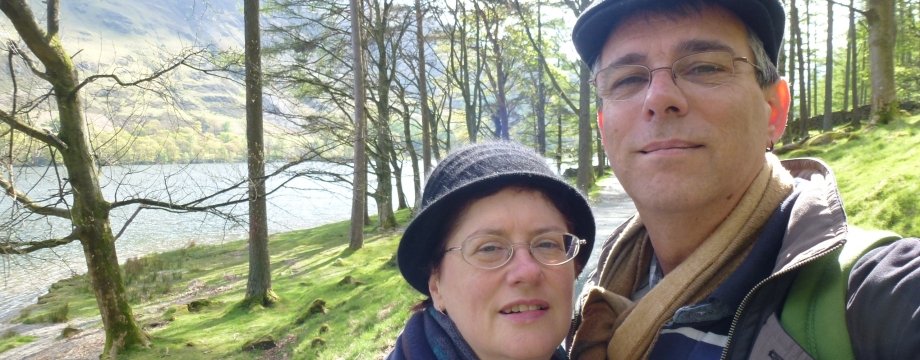Armed with timed-entry tickets and a bit of luck we readied fairly early and then headed down the hill to the bus stop near the metro station closest to us, looking for a ride further towards the ocean, to a place called Belem.
A modern tram (15E) arrived, we had expected a bus or older rattle box, but because it was not crowded we hopped on. Travelling early is often a good idea here as it seems people do not really get going much before 10am. The tram followed the coastal fringe and we hopped off at the stop adjacent Jeronimo Monastery.
Our timed tickets were for 9:30am, we were early, it was quiet and there was nearly no one around, so we decided to take morning tea at an iconic location, the home base for Pasteis de Belem. We went inside, navigated a voluminous labyrinth of tables, sat and ordered tea/latte and a couple of their custard tarts, prepared to be blown away by how different they were. More on the differences in a future post.
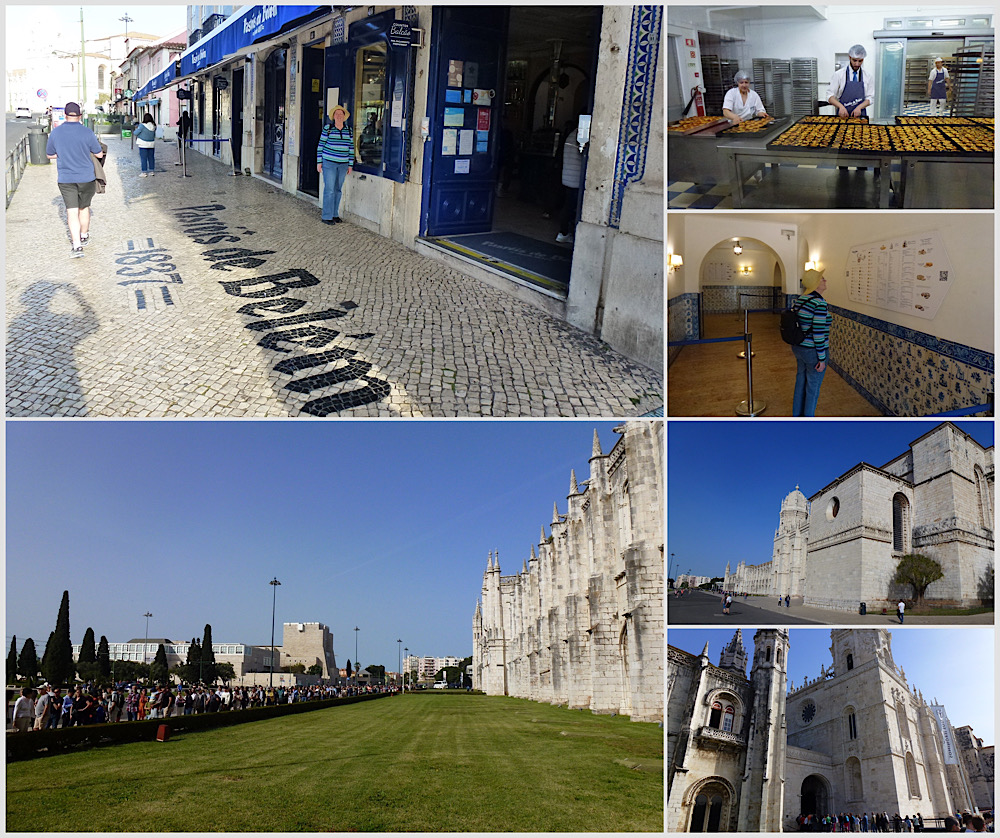
Suitably refreshed and toiletted, we headed over to the monastery to see, out of nowhere, huge queues of people already lined up. We made our way to the entry only to be told to join the end of the longer line, which we dutifully did. Tour operators in the mid morning have priority access (they are on a schedule, I get that), meaning our line of timed ticket holders had to wait as they dribbled us in a few at a time. I am not sure they should even sell timed-entry tickets between 9:30 and 10:30 because of the relentless flood of coach loads of people.
Over half an hour in the sun, in a queue that got longer and longer, and we were finally in to the sections of the monastery open to the public. I will say this out loud – I am a bit of a fan of a cloister. Anyone who has read our blog posts from UK will see I am drawn to them, but the cloister at Jeronimo Monastery is something else entirely.
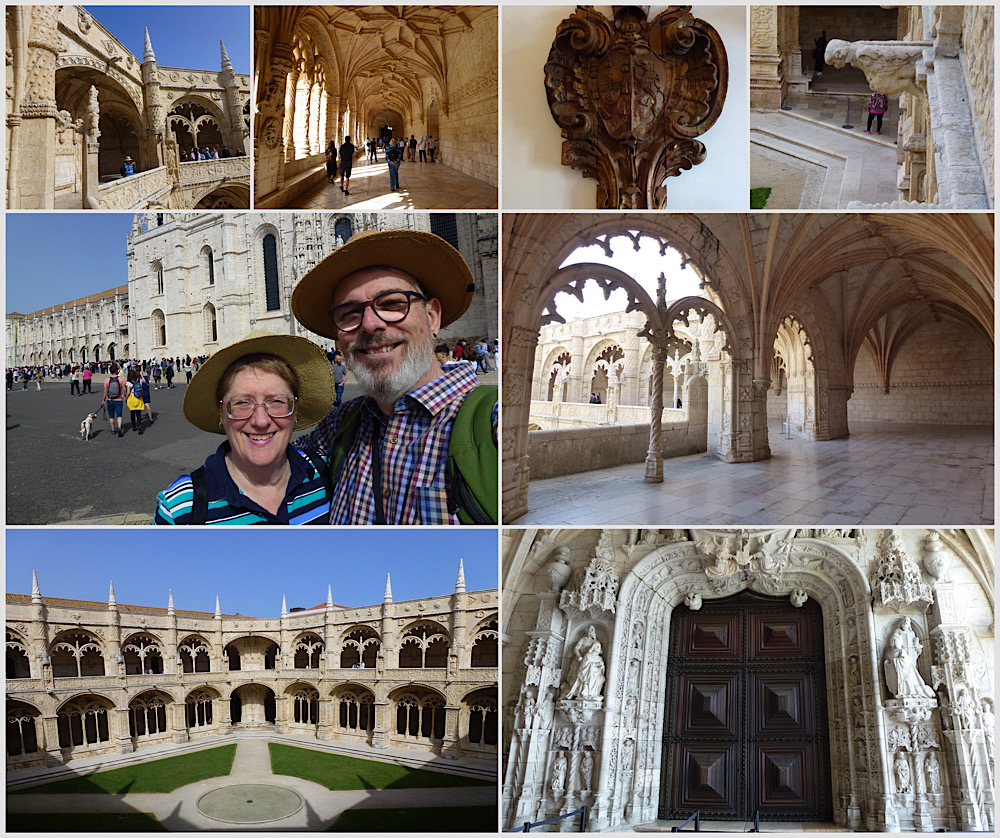
Built in 1509, the spectacular building with intricate carved doors and outsides leads to a 2-level quadrangle or walkway surrounded lawn. The ambulatories (or covered walkways) have glorious vaulted ceilings and archways, pillars and rails on the inside edges. Each archway, pillar and rail was carved stone, no two alike. Gargoyles (most waterspouts, no two alike) sprout from gutters into the quadrangle and the whole effect is breathtaking.
I think the purpose of a cloister is for people to amble, in quiet contemplation cut off from the outside world. With seats and benches, informal gatherings could form and the whole atmosphere would be academic, quiet contemplation.
On the bottom level of the cloister, the Chapter House was also open. It had a large stone sarcophagus in the middle and again the ribbed vaulted ceilings were amazing, lending grandeur to the chamber. On this level the Refectory (eating hall) was also accessible, the walls of which were adorned with massive ceramic tile friezes of various rural scenes which were quite charming. Along one wall of the ground level there were 12 little confessional chambers (that resembled solitary confinement cells in a prison).
The insides of the Monastery were cool and had a feeling of calm. I am sure it was a welcome oasis in the heat, but I think all the stone would have made it bitterly cold in winter. Overall just amazing, both in age and state of preservation – a must visit. All of the other cloisters I have seen have been in ruins, so it was wonderful to see one largely intact. This is now my new favourite cloister (so far).
On emerging from the Monastery, we headed across the road, though some parklands (and a rare grassed area) towards the water’s edge in the direction of a huge and imposing sculpture – “The Monument to Discoveries”. We took the pedestrian underpass to avoid the working railway tracks and emerged in front of what looked like a huge narrow pillar of stone.
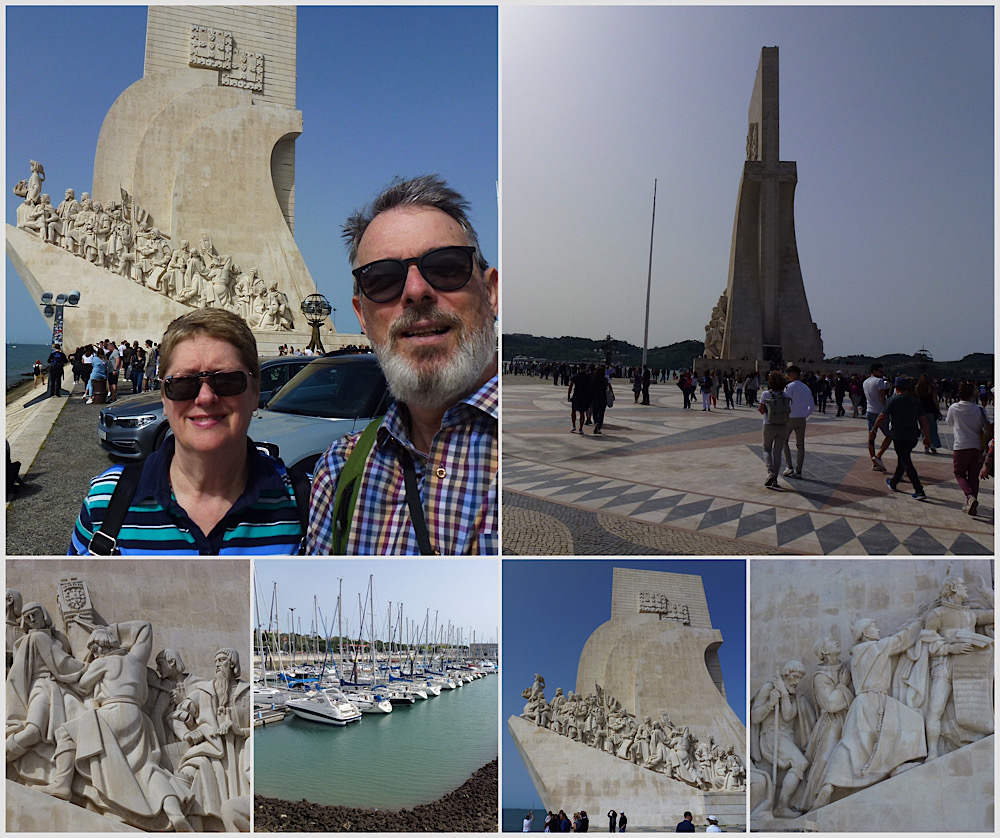
Imagine a huge book, standing up as you approach its spine, which resembles a huge sword. As you explore further, you discover each of the covers (sides) feature carved relief dioramas of characters that seem to be on the prow of a giant sailing ship, under vast sails. Clearly this is a nod of appreciation for those brave enough to set out to explore, convert, trade and conquer. Portuguese ships are responsible for the discovery and trade of so many things that world culinary cultural traditions now rely on, like introducing chillies to Thailand, tomatoes to India, spices and herbs elsewhere along with a bustling slave trade.
Apparently you can pay to climb to the top, but the thought of all those stairs made my knees ache so we decided to take in the scale and grandeur from ground level.
We then continued along the shore, seaward until, in the distance an ancient tower defense came into view. We had to divert around a small marina to get closer, and noticed a huge snaking queue. Jo sat in the shade in a large grassed area and I walked closer, determined to get some photos. I crossed 3 zigs (or was it zags?) of people in queues with helpful signs like “2 hours from here” etc. These patient souls were queuing to climb to the top of the tower and see the water views one side, views of the queues of people on the other, so I decided to excuse myself, get nice and close and take photos at ground level.
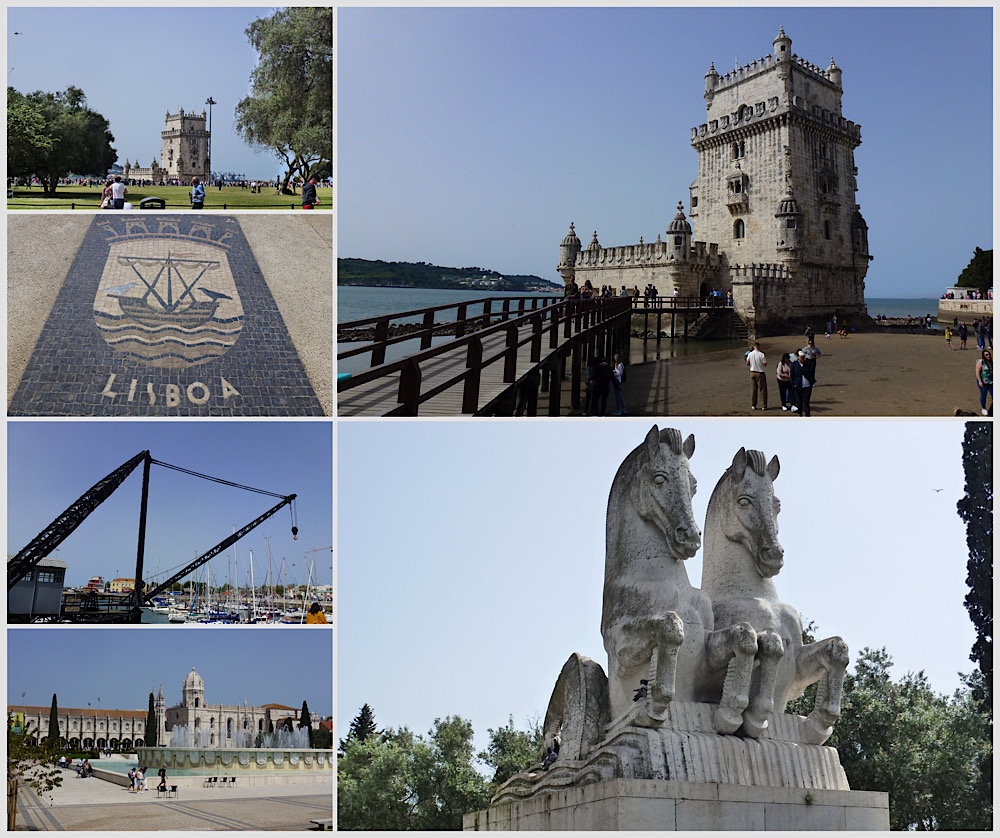
Belém Tower, officially the Tower of Saint Vincent is a 16th-century fortification that served as a point of embarkation and disembarkation for Portuguese explorers and as a ceremonial gateway to Lisbon. Ornately carved and in remarkable condition for something that is actually in the water, it looks like it was part of a larger, as yet unfinished castle, but boasts canon slots and other fortifications and is near a slight narrowing of the estuary – strategically useful as a point of defense.
After resting our now aching feet (Lisbon’s cobbles take their toll on feet and knees) we crossed the pedestrian overpass over the train and roadway and walked back to central Belem in search of some lunch. In perfect (not) Portuguese I ordered “duo baguette, Peru et Bifana” and to my delight we got grilled turkey marinated in lemon and grilled pork marinated in loads of garlic, each in crunchy half baguettes, served with mayo and salad. A filling and pretty healthy late lunch indeed.
On our way back to the tram stop we purchased (via an express pasteis-only line) 4 more custard tarts to help us further research which brand was best, then waited for a tram home. A near empty bus arrived before our planned tram, Jo recognised the route number and we hopped on, again getting a seat, before the bus filled to the brim with other tourists and travellers. The bus wended its way back to our home station. Google Maps and the official bus/tram schedule differed significantly, it seems Google maps did not know of the roadworks causing diversions and so was suggesting crazy routes to and from home.
We rested at home in the afternoon then enjoyed a tasty and varied Tapas dinner before a welcome sleep. Our rest day is tomorrow, some time to sleep in and lounge about well overdue.

